This is our review of the OCBC 90°N Mastercard issued in Singapore. It forms part of our series of credit card reviews, which are all summarised on our dedicated Credit Cards page.
Dollar amounts refer to SGD, and ‘miles’ refer to KrisFlyer miles, except where stated. This review was updated on 26th August 2019.
Key features

Annual fee: $192.60/yr (waived for first year)
EIR/APR: 26.9%
Sign-up bonus: 7,000 miles*
Local earn rate: 1.2 miles per $1
Overseas earn rate: 2.1 miles per $1
Bonus earn rate: 4.0 / 8.0 miles per $1**
Foreign transaction fee: 3.0%
Minimum Age: 21
Minimum income (Singaporean): $30,000/yr
Minimum income (Foreigner): $45,000/yr
* Minimum $5k spend applies in first 3 months
** Until 29th February 2020, see below for details
Annual fee
The OCBC 90°N Mastercard has an annual fee of $192.60, however the fee is waived in the first year so there’s no upfront cost for this card.
Supplementary cards are available at an additional annual fee of $96.30, though again this is waived in year one.
Earning rates
This card earns miles at the following rates:
- 1.2 miles per $1 spent locally (i.e. transacted in SGD), and
- 2.1 miles per $1 spent overseas (i.e. transacted in foreign currency)
These effectively match the Citi PremierMiles and DBS Altitude rates, both of which bear striking similarity to this card, with the exception of the overseas earn rate which comes in 5% better at 2.1 miles per $1 compared with 2 miles per $1.
While that’s a nice edge over those cards, you’ll achieve higher earn rates with other widely available ones like the BOC Elite Miles (1.5 mpd locally, 3 mpd overseas) or the UOB PRVI Miles (1.4 mpd locally, 2.4 mpd overseas).
Bonus overseas earn rate
The big selling point with this card is the bonus unlimited 4 miles per $1 rate on overseas spend, applicable between now and 29th February 2020.
That rate applies to transactions posted in foreign currency, so you don’t need to be physically abroad when using your card in order to qualify.
4 mpd rates are usually only applicable to specific spend categories, like department store shopping, clothes and shoes, and with most other cards on the market are capped at monthly or annual spend levels. Examples include the Citi Rewards and OCBC Titanium Rewards cards.
That makes this a very attractive benefit if you transact significant amounts on general overseas spend. Personally we use the BOC Elite Miles card for 3 mpd on these general transactions (provided we have expired those capped 4 mpd categories, or they don’t apply), so this is a 33% bonus on top of that already excellent earn rate from now until the end of February 2020.
Note that a number of transaction categories are excluded from bonus 4 mpd points earning for overseas spend, see item 8 in the terms and conditions document for the promotional rate.
8 mpd on hotel bookings
Between now and 29th February 2020 you can get 8 miles per dollar spent on your OCBC 90°N Mastercard at the following accommodation booking sites:
- Agoda (via www.agoda.com/ocbc90n)
- Airbnb
- Expedia (via www.expedia.com.sg/ocbc90n)
- Millennium Hotels & Resorts
- Mr & Mrs Smith

This 8 miles per dollar consists of:
- for every S$1 spent in local currency, a baseline 1.2 Travel$ + 6.8 bonus Travel$, or
- for every S$1 spent in foreign currency, a baseline 2.1 Travel$ + 5.9 bonus Travel$
There is no spend limit at these merchants for 8 miles per dollar, and it is easy to check because (with the exception of Agoda) you will be awarded the bonus miles at the time the transaction is posted to your account.
Be careful with Agoda and Expedia
While most of the hotel categories don’t come with strings attached for the 8 mpd earn rate, there are additional terms to be aware of for both Agoda and Expedia transactions.
In both cases you’ll have to book through the dedicated links as listed above.
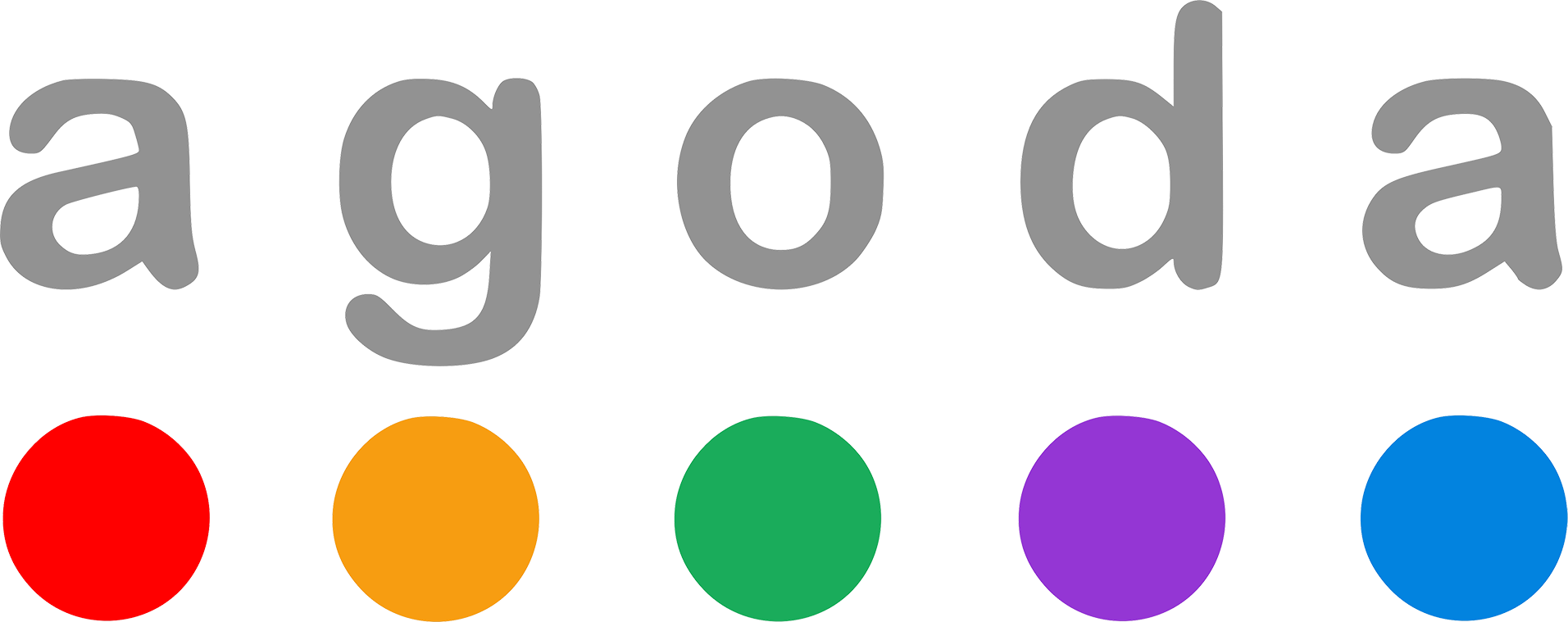
For the Agoda promotion, note that it is only applicable to prepaid rates (not pay at the hotel). It cannot be used in conjunction with any other promotions, discounts, cashback sites, loyalty programmes, rewards, etc.
You must book by 29th February 2020 and complete your stay by 30th September 2020.
Bonus Travel$ in this case (i.e. the amount over and above the regular local / overseas earn rate of 1.2 / 2.1 mpd) will be credited within 2 calendar months after you leave the hotel.

For the Expedia deal it’s also only applicable to prepaid bookings (not pay at the hotel), and includes the following:
- An Eligible Hotel-only booking; or
- A flight-only booking on any Participating Airline; or
- A flight booking on any Participating Airline + Eligible Hotel package booking; or
- A local activity booking; or
- A car rental booking
The trick here is to know which “Eligible Hotels” and “Participating Airlines” they are talking about.
“Eligible Hotels” are hotels that are not on Expedia’s exclusion list as published here. Prepare to be disappointed – it’s a long list of exclusions!
“Participating Airlines” are as follows:
- Air Macau
- Air Mauritius
- Air Niugini
- Cambodia Angkor Air
- China Eastern Airlines
- China Southern Airlines
- Finnair
- Garuda Indonesia
- Hawaiian Air
- Korean Air
- Lao Airlines
- Myanmar International Airways
- Qatar Airways
- Saudi Arabian Airlines
- Shenzhen Airlines
- Sichuan Airlines
- Thai Airways
- Turkish Airlines
- Xiamen Airlines
Nothing too exciting for most of our readers on that list, with the possible exception of Finnair, Qatar, Thai and Turkish.
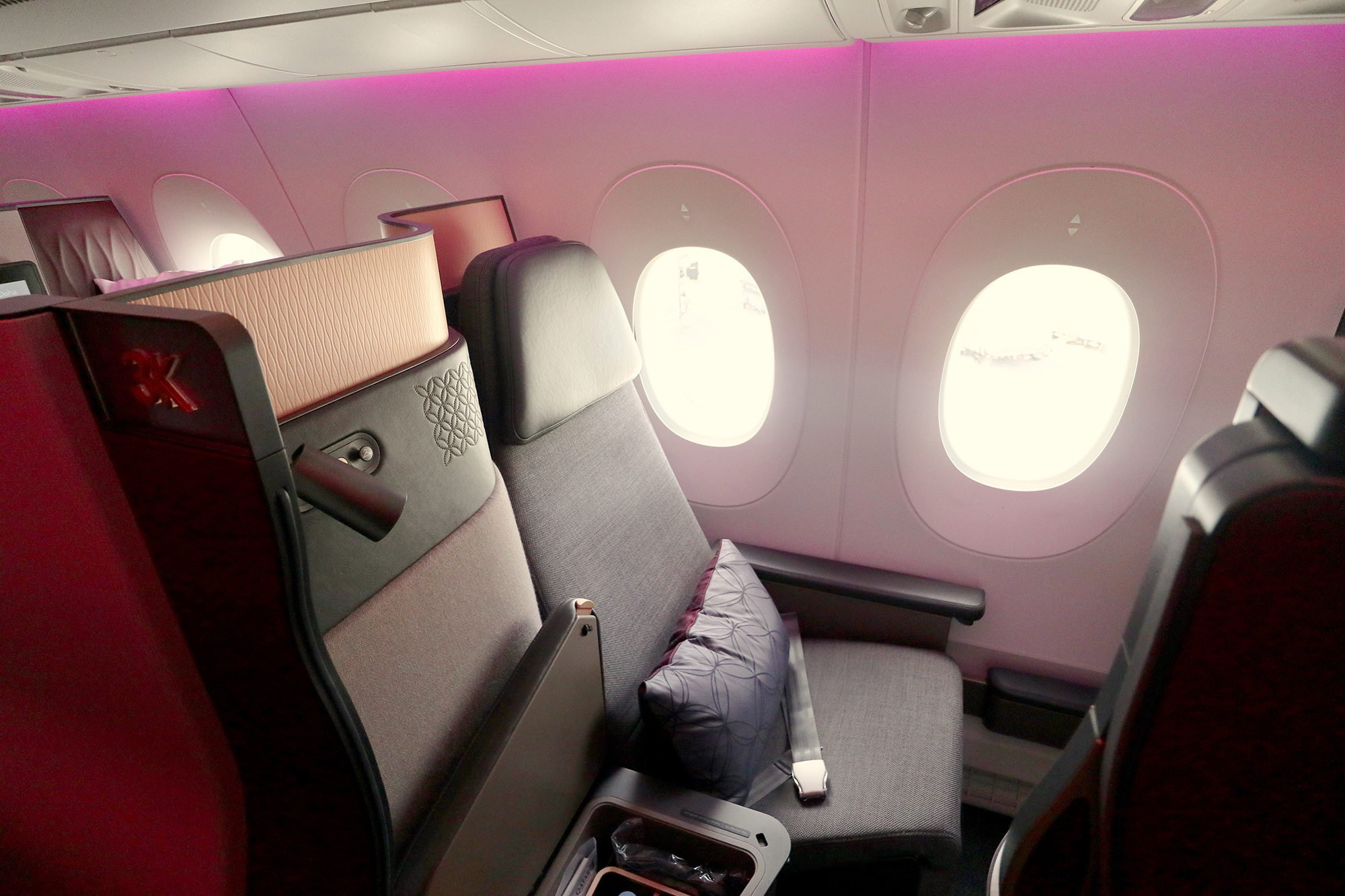
4 mpd on flights, shopping and entertainment
Between now and 29th February 2020 you can get 4 miles per dollar spent on your OCBC 90°N Mastercard at the following flight, shopping and entertainment booking sites:
- AirAsia
- DFS Singapore
- Jetstar Asia
- SilkAir
- Singapore Airlines
- Scoot
- Netflix
- Spotify
- The Shilla Duty Free at Changi Airport
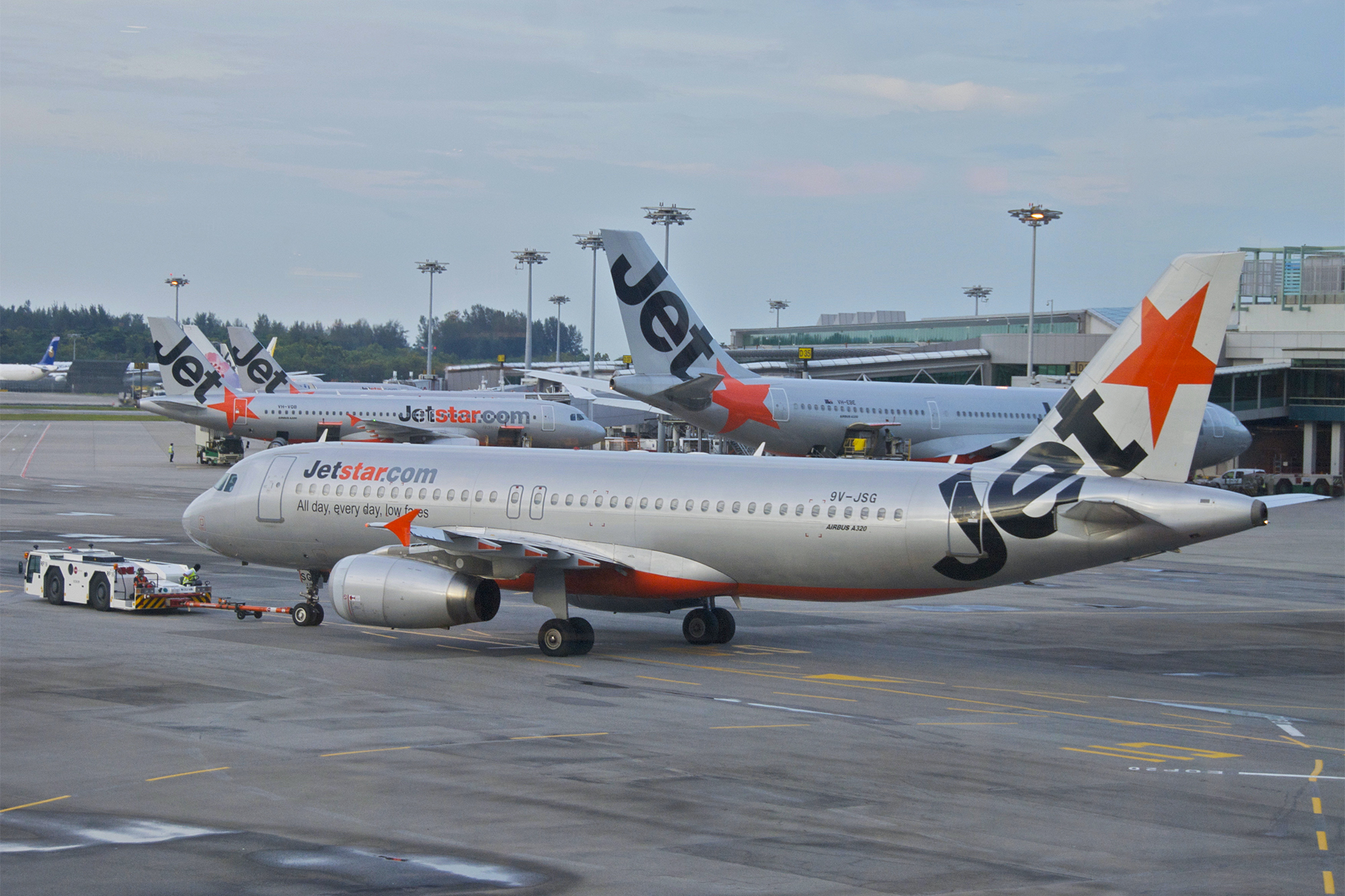
This 4 miles per dollar consists of:
- for every S$1 spent in local currency, a baseline 1.2 Travel$ + 2.8 bonus Travel$, or
- for every S$1 spent in foreign currency, a baseline 2.1 Travel$ + 1.9 bonus Travel$
There is no spend limit at these merchants for 4 miles per dollar, and as with the majority of accommodation merchants the bonus Travel$ will post at the same time as the baseline ones, making it easy for you to check that it has tracked correctly.
Bonuses don’t stack
Just to be clear – you’ll get the highest bonus earn rate applicable to your transaction with the card, but they won’t ‘stack’ with each other. For example an Airbnb booking in Euros won’t get you 12 mpd (8 mpd Airbnb promo + 4 mpd bonus overseas earn rate), you’ll just get 8 mpd.
Similarly an AirAsia flight booked in Indonesian Rupiah won’t attract 8 mpd (4 mpd AirAsia promo + 4 mpd bonus overseas earn rate), you’ll just get 4 mpd.
Sign-up bonus
If you apply for the card and are approved by 31st October 2019, you’re eligible for 7,000 bonus miles when spending $5,000 within the first 3 months. The offer is valid for new OCBC credit card customers, or those who have not held an OCBC credit card in the last 6 months.
A smaller bonus of 3,000 miles for the same minimum spend is available to existing OCBC credit card customers, or those who have cancelled their OCBC card(s) within the last 6 months.
Your eligible spend period is from card approval until the end of the third full calendar month, not including the calendar month of card approval.
For example, if you are approved for the card on 9th September 2019, the qualifying spend period is from that date until 31st December 2019 (three full calendar months from the 1st October 2019).
As you can see, approval at the beginning of a calendar month gives you almost an entire ‘fourth month’ to meet the qualifying spend, so you may want to wait until early September if you’re interested in the sign-up bonus.
Your total earning (including the sign-up bonus) during this promotion will be at least 13,000 miles, assuming local spend at the 1.2 miles per dollar rate:
- Sign-up bonus = 7,000 miles
- $5,000 x 1.2 mpd = 6,000 miles
- Total earning = 13,000 miles
The miles bonus will be credited to those who meet the spend requirement as follows:
- Qualifying Spend made by 30th November 2019 – by 31st December 2019
- Qualifying Spend made by 31st December 2019 – by 31st January 2020
- Qualifying Spend made by 31st January 2020 – by 29th February 2020
As with most sign-up bonuses the bank is expecting you to charge retail transactions to meet the $5,000 minimum spend level. This can be a face-to-face or online purchase, but does have a list of excluded categories, including:
- Transactions made via NETS
- Cash on Instalment, Instalment Payment Plan, Interest, Late Payment charges
- Tax Payment, Cash Advances, Balance Transfers, Internet Banking
- AXS, SAM or any other payment network and all other bank fees.
OCBC retains the discretion to determine whether or not a transaction is considered a “retail transaction”, so it’s always best to play on the safe side if you can.
For a list of transactions excluded from points earning for general spend, see item 1.5 in the terms and conditions document for the OCBC 90°N Mastercard.
The Qualifying Spend will be aggregated between principal and supplementary cardholders, so if it makes it easier to achieve you can take out a supplementary card to assist.
Cash credit
You’ll also be eligible for a $50 cash credit on card approval if you are new to OCBC credit cards (or haven’t held one for at least 6 months), provided you are approved by 31st October 2019.
The cash credit applies whether you meet the spend criteria for the 7,000 miles bonus or not. It will be applied to your account by the end of the month following card approval, for example if your card is approved in September 2019 it will be paid in October 2019.
Opportunity cost
This isn’t the most exciting sign-up bonus on the market, so it’s worth considering what it will cost you to divert $5,000 of your spending onto the 90°N card to achieve it.
Personally we are using the BOC Elite Miles card for general spend in Singapore. Since that earns 1.5 miles per dollar on local spend, moving our transactions to this card would lose us 0.3 miles per dollar x 5,000 = 1,500 miles.
That would reduce our ‘effective bonus’ from 7,000 miles to 5,500 miles. Problem is we both hold other OCBC credit cards so in fact would only be eligible for the 3,000 miles sign-up bonus, effectively reduced to 1,500 miles by diverting local spend from our BOC cards.
In both cases it significantly reduces the sign-up bonus to levels we’d say simply aren’t worth bothering with, given you’ll have to keep track of your spending totals and avoid the exclusion categories.
Of course if you can meet the sign-up bonus threshold with spending in the 4 mpd / 8 mpd bonus categories, that changes the equation completely and does make it a more worthwhile offer. We are assuming local spend outside the bonus categories here.
There are better sign-up bonuses out there, and for a complete rundown of the latest ones available for Singapore-issued credit cards check out our continually updated list.
Renewal bonus
There’s a renewal bonus of 10,000 miles for payment of the $192.60 annual fee, which would commence at the start of the second card membership year. Since the fee is waived for the first year, these miles are not awarded in year 1.
That’s the equivalent of ‘buying’ the miles for 1.93 cents each at annual renewal, slightly above our upper limit to buy of 1.9 cents per mile, so you may prefer to try and have the fee waived and forgo these additional miles, assuming you are keeping the card in year 2.
Are KrisFlyer miles credited directly?
No, in fact rather than being credited miles directly you’ll accrue ‘Travel$’ for your regular spending on this card. These transfer to KrisFlyer miles at a 1:1 ratio, so for $10,000 of local spending, you’ll net 12,000 Travel$, which can be converted to 12,000 KrisFlyer miles.

Do Travel$ expire?
No, and that’s great because as you will probably know once transferred into KrisFlyer miles your miles will then only last for three years. That means no need to keep an eye on the expiration date at the OCBC side, just transfer to KrisFlyer when you need to.
What is the transfer cost to KrisFlyer miles?
Here’s another great benefit of the OCBC 90°N Mastercard, like the bank’s Voyage card transfer to KrisFlyer miles are free. That’s quite unlike many other cards in Singapore, which typically charge around $25 each time you transfer your points to KrisFlyer miles.
It means there’s no need to wait around to accumulate a decent level of Travel$ before transferring to KrisFlyer to ‘dilute’ the fee to a reasonable level per mile, you can do so as soon as you’ve reached one of the transfer thresholds if you wish.
Just bear in mind as we stated above, once the miles are transferred into KrisFlyer you’ve got three years to use them, so unless you have an urgent need then it may be better to keep them as Travel$ for as long as possible.
Is there a minimum transfer amount?
Moe good news – the minimum volume of miles you can transfer into KrisFlyer is 1,000, with 1,000-mile blocks thereafter.
Many cards, including other OCBC products, restrict you to a 10,000-mile minimum transfer level and 10,000-mile blocks after that, meaning it’s often better to wait until the next ‘block’ is reached before transferring. No big issues with that here.
How long do miles take to credit to KrisFlyer?
The official line is “approximately 21 working days”. That’s probably the worst transfer time between credit card reward points and KrisFlyer miles in the whole of Singapore.
The good news is – it doesn’t actually take that long at all. A few data points show that transfers from Travel$ (or OCBC$ if you hold the Titanium Rewards card / Voyage Miles if you hold the Voyage card), take just 24 hours.
I personally transferred OCBC$ to KrisFlyer just last week and can confirm the 24-hour turnaround (transfer requested 12.30pm on Wednesday, credited to KrisFlyer at 11.30am on Thursday).
That’s actually one of the faster points to miles transfer times in Singapore.
Which loyalty schemes can I transfer into?
Singapore Airlines KrisFlyer is the sole frequent flyer program for OCBC redemptions.
Do reward points pool with other OCBC cards?
Unfortunately not. As OCBC state in their terms and conditions “The Travel$ cannot be transferred, assigned or carried over to any other card issued by OCBC Bank”.
That means if you’re holding the Titanium Rewards or Voyage cards you won’t be able to combine your Travel$ with OCBC$ / Voyage Miles, they act as a standalone rewards currency and only apply to the 90°N Mastercard.
Points rounding
Your transactions on this card will first be rounded down to the nearest whole Singapore Dollar (after conversion from the foreign currency amount if applicable), and then multiplied by the prevailing rate depending on the transaction type.
“Travel$ shall be awarded to the Cardmember based on the amount of each Card Transaction charged to the Card Account, rounded down to the nearest dollar.”
For example take three local (SGD) transactions outside any promotional offer, therefore accruing 1.2 Travel$ per $1 spent.
- $9.58 = $9 (rounded down) x 1.2 = 10.8 reward points
- $67.23 = $67 (rounded down) x 1.2 = 80.4 reward points
- $248.15 = $248 (rounded down) x 1.2 = 297.6 reward points
That means as soon as cents are involved in your transaction, you’re not quite getting 1.2 miles per dollar. For those three purchases you’ll receive 388.8 reward points for $324.96 spending (1.196 miles per dollar).
Minimum spend to earn points
Since any amount in Singapore dollars will first be rounded down to the nearest dollar, $1.00 (SGD) is the minimum transaction amount to earn any reward points using the OCBC 90°N Mastercard, whether transacted in SGD or foreign currency.
Forex fee / cpm overseas
The OCBC 90°N Mastercard has a 3.0% foreign currency transaction fee.
During the promotional period that means you’re getting an unbeatable cost per mile of just 0.80 cents, though from March 2020 onwards it’s not the best card to use with a regular earn rate of 2.1 miles per dollar meaning you’re paying 1.52 cents per mile when spending in foreign currency.
There are better cards than that for overseas spend, and you should be looking at the BOC Elite Miles or Standard Chartered Visa Infinite for much better rates, not just in cost per mile terms but miles per dollar too.
Cost per mile on overseas credit card transactions by card
(Best to worst, August 2019)
| Card | Fee | Miles per $ | Cost per mile |
(Promo rate) |
3.0% | 4.0 | 0.80¢ |
| 3.0% | 3.0 | 1.06¢ | |
| 3.5% | 3.0 | 1.22¢ | |
| 2.5% | 2.0 | 1.36¢ | |
| 3.0% | 2.3 | 1.39¢ | |
| 3.25% | 2.4 | 1.43¢ | |
| 2.75% | 2.0 | 1.48¢ | |
| 2.8% | 2.0 | 1.50¢ | |
(Regular rate) |
3.0% | 2.1 | 1.52¢ |
| 3.0% | 2.0 | 1.60¢ | |
| 3.0% | 2.0 | 1.60¢ | |
| 3.5% | 2.0 | 1.83¢ | |
| 3.25% | 1.2 | 2.86¢ |
Cost per mile also accounts for an additional 0.3% ‘spread’ over money changer currency rates, though this doesn’t apply to all banks and all foreign currencies, so is a worst-case scenario.
Cashback alternative
The OCBC 90°N Mastercard also offers a cashback alternative, allowing you to redeem Travel$ for 1.2% cashback. That’s equivalent to 1.44% (1.2 x 1.2) cashback on local spend and 2.52% (2.1 x 1.2) cashback on overseas spend at the standard earn rates.
During the promotional period for overseas spend until the end of February 2020 it’s the equivalent of 4.8% (4.0 x 1.2) cashback on overseas spend.
These are poor rates relative to the value of KrisFlyer miles earned, and unlikely to be of much interest to our readers (unless you value KrisFlyer miles at less than 1.2 cents each, in which case there are better cashback cards on the market anyway, especially after the promo period).
Other benefits
There aren’t many other perks with the OCBC 90°N Mastercard, as you’d expect for a fee-free (year 1) card, but the key benefits which will be of most interest to our readers are:
- LoungeKey by Mastercard membership allowing access to over 800 worldwide airport lounges for US$27 per visit (note – no free visit allowance, this is the basic membership).
- 20% off the flexible rate for all Millennium Hotels and Resorts properties, plus complimentary Wi-Fi.

Will it entice Voyage cardholders to switch?
OCBC has traditionally stuck to the high end of the market for its airline miles credit card, with the OCBC Voyage. That’s a $500 per year annual fee card with a steep $120k income requirement.
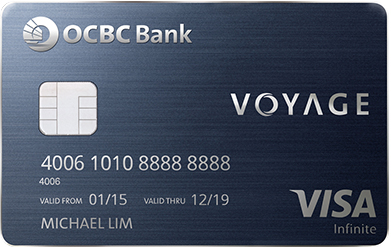
There is always an element of overlap when your strategy is to have two cards in the same market segment, as OCBC is now doing for travel / air miles with the 90°N card.
There remain significant differences though. Most people who hold the Voyage card tell us they love it for the concierge, the airport limos and the unlimited lounge access. There’s also the option to use Voyage Miles to offset the cost of revenue flights, though the value proposition there can vary so it’s to be used with care.
We don’t see this card as a replacement for the Voyage card as far as most OCBC customers are concerned, and it’s perhaps the reason the bank stopped short of throwing in any free lounge access with the 90°N card, to maintain clear differentiation.
The real competition
The OCBC 90°N Mastercard is pitched as an entry-level card, with a 30k income requirement, which pegs it squarely against the Citi PremierMiles and DBS Altitude cards in Singapore.
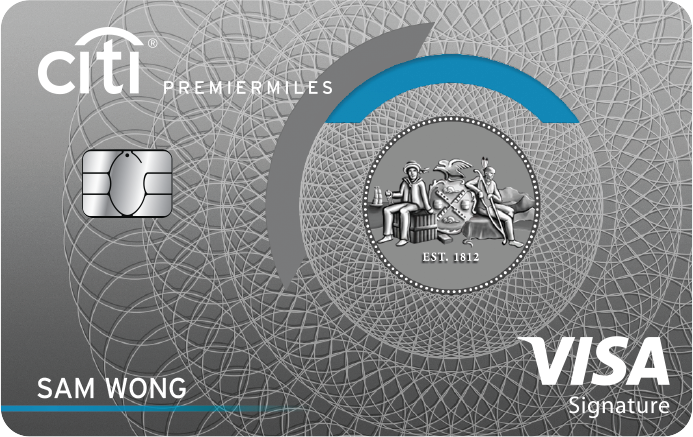 |
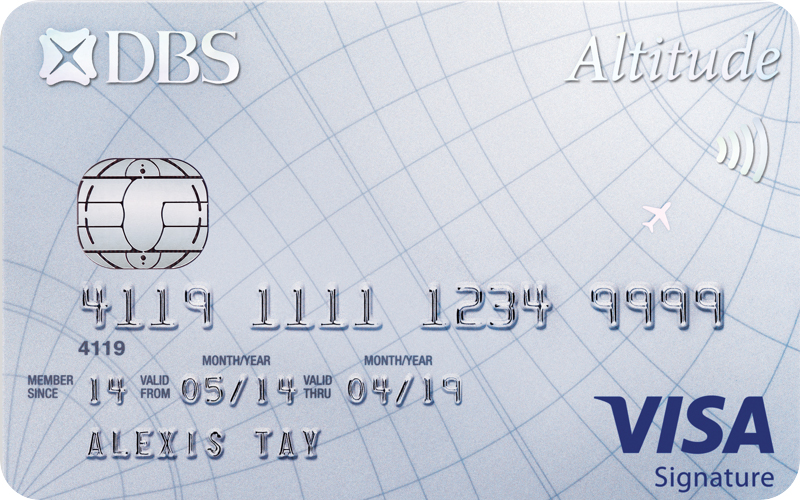 |
Once the promotional period for enhanced miles earning is over, there are actually a lot of similarities between all three products.
What’s missing from the 90°N card is free lounge access, with both competitors offering Priority Pass membership including 2 free visits per year.
OCBC will be hoping that a 5% better overseas earn rate, smaller 1,000-mile conversion blocks and fee-free transfers to KrisFlyer will be enough of an edge to persuade people to keep and use the card long term.
As we mentioned in the earning rates section, the problem is that you shouldn’t be using any of those cards for general overseas spend. At the entry-level 30k income requirement you can achieve:
- 3 mpd with BOC Elite Miles (42% more than the 90°N card)
- 2.4 mpd with UOB PRVI Miles (14% more than the 90°N card)
Provided you spend enough each year in foreign currency (for us it’s about 60% of our annual spending), you definitely need to look at one of these cards to maximise your miles earning in this category.
Our summary
A strange name for a credit card, 90°N is the geographic position of the North Pole. It’s probably one of the least hospitable places on earth, and somewhere almost no one wants to travel! That makes it a strange name for a travel related product in our opinion.
Compasses don’t even point there!
Presumably it ties in with the bank’s “truly go the distance” tagline for the 90°N Mastercard, though excluding the southern hemisphere seems a bit strange (Singapore sits at 1°N), and it’s not clear quite how this card would help us get to the North Pole even if we wanted to go there.
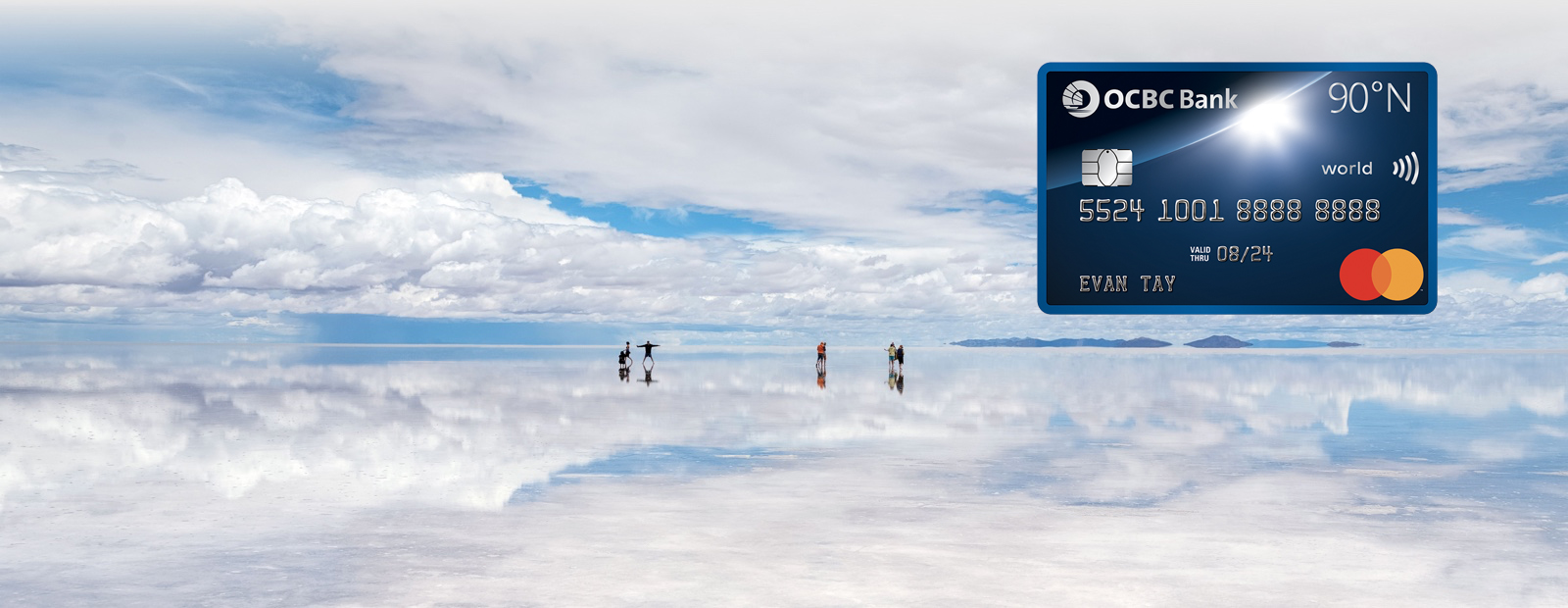
Nevertheless, the OCBC 90°N Mastercard does have some very nice introductory perks.
An uncapped 4 miles per dollar on all overseas spend until the end of February 2020 is the standout benefit, at least a third better than rates offered by competing cards.
For travel related spend there are also excellent and uncapped 8 mpd and 4 mpd rates on a variety of (mostly) hotel and flight transactions during this period.
It’s great that your Travel$ never expire, with 1,000-mile transfer blocks to KrisFlyer and no conversion fees.
There are pros and cons though. On the flip side it’s up against the Citi PremierMiles or DBS Altitude options. Both of those banks have more transfer partners (especially Citi) and include a couple of lounge visits per year, but require 10,000-mile blocks and charge for the points transfer each time.
Remember DBS Altitude also has an ongoing 3 mpd rate for various online flight and hotel bookings, including Singapore Airlines and Qatar Airways.
Our verdict
Get it for the very useful and generous introductory promotional earn rates, but don’t necessarily be distracted by the poor sign-up bonus. For some existing customers like us, it’s only worth 1,500 miles.
If you make the majority of your credit card spend locally then from March 2020 it’s not a bad proposition to hold on to, given the 1,000-mile transfer blocks and fee-free transfers to KrisFlyer. Do bear in mind though cards like Citi PremierMiles give you far more loyalty programmes to transfer your miles to.
Finally if you make a significant chunk of your annual spend on foreign currency transactions, this card is no good for that from next year. It’s back to BOC Elite Miles for us from 1st March 2020 for the much better earning rates.

Our recommendations for credit cards and other similar products on this site do not constitute financial advice.
(Cover Photo: Angela Compagnone)
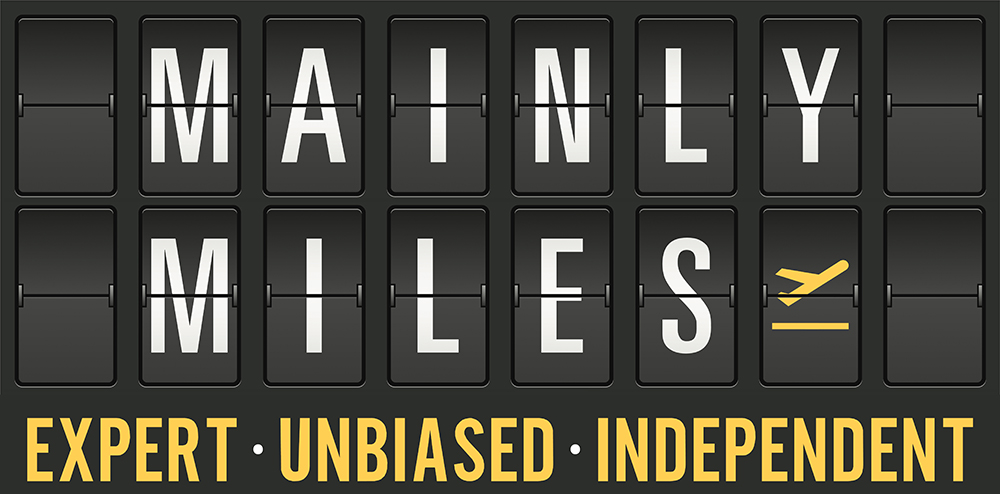

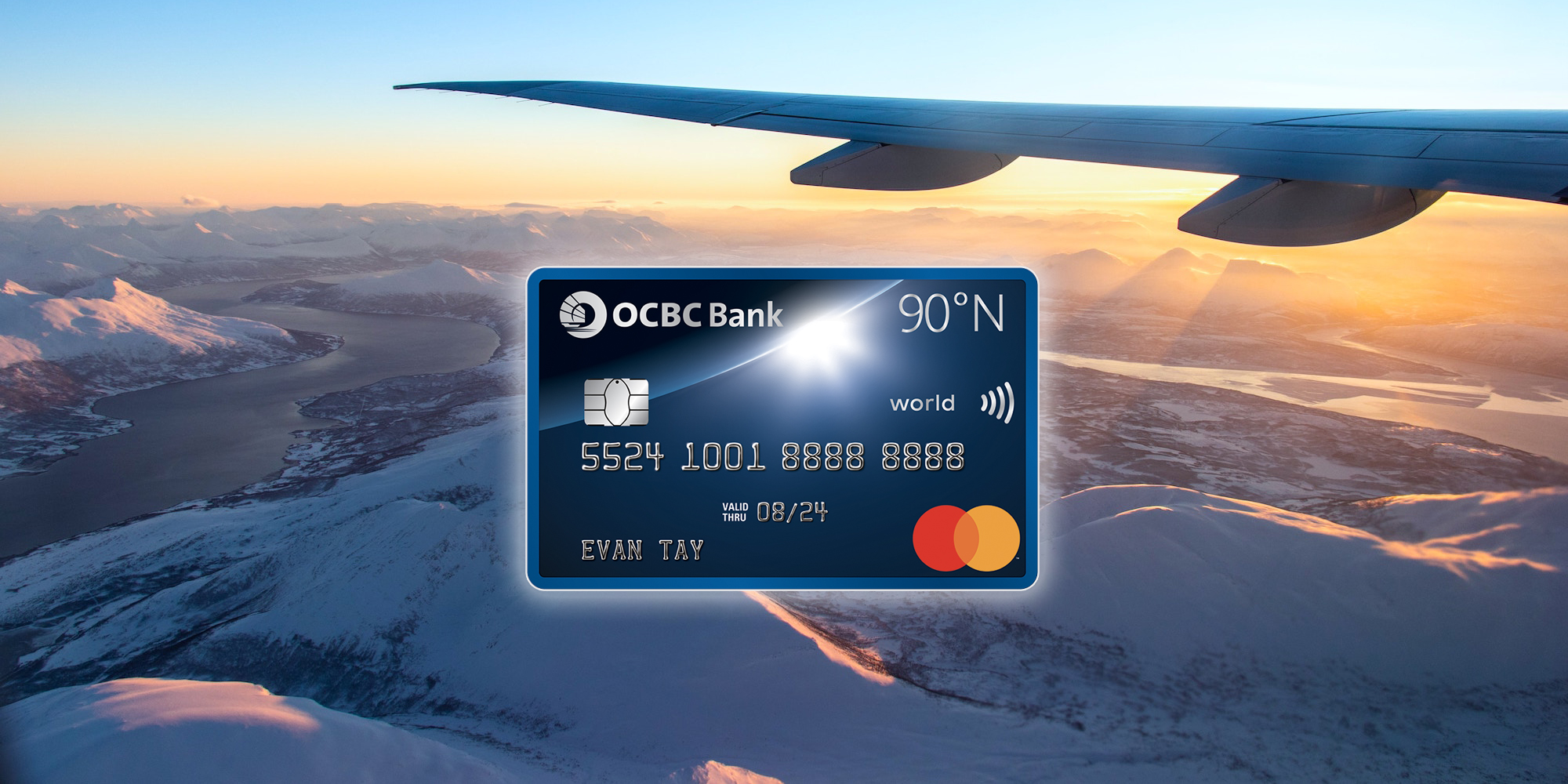

Hi Andrew, how is the 0.83c CPM derived? I thought: 4 MPD at the cost of 3% = 0.75c CPM.
Hi Vincent,
Almost, but not quite! 3% at 4 mpd is 0.73 cpm, because you have to account for the fact that you earn miles for the fee as well as the original ‘base cost’. For a S$100 transaction you’ll earn miles on S$103 in this case (A fee of $3 for (103 x 4) = 412 miles, 3 / 412 = 0.00728).
You’re right though that 0.83 cpm quoted was wrong, that’s now corrected to 0.80 cpm. The other rates are similarly corrected.
Why 0.80 and not 0.73?
That’s because the card networks (Mastercard in this case) charge a ‘spread’ over and above the interbank (XE rate). Generally this is about 0.6%, though it differs from currency to currency.
A good money changer in Singapore is also charging approximately the same 0.6% ‘spread’, and since that is the alternative we are comparing with (since consumers can never achieve the interbank rate even if they wanted to), it’s a fair comparison.
The problem is that in our analysis we find that the card networks can charge up to 0.9% ‘spread’ for some currencies, where money changers do not.
We therefore assume a 0.3% additional spread when using a credit card for foreign currency transactions (0.9% – 0.6%) as a worst-case scenario in case you are transacting in one of those currencies.
It should generally be less than that, but since we’re talking about ‘buying’ miles when making overseas transactions it’s important to make the most pessimistic call.
For a S$100 transaction 3% + 0.3% = 3.3% at 4mpd is a fee of S$3.30 for (103.3 x 4) = 413.2 miles, 3.3 / 413.2 = 0.00799).
Hope it makes sense!
Great review! Thanks!
Planning to make a big FCY payment via PayPal. Will the exclusion still be dependent on the MCC of the receiving merchant? In this case, I am signing up with a cooking school in Japan. The T&C specified Education as excluded but I am not sure if the same will apply if it’s via PayPal. Been trying to check with the school their MCC number but like most merchants I’ve encountered so far, most do not seem to even understand what I am talking about.